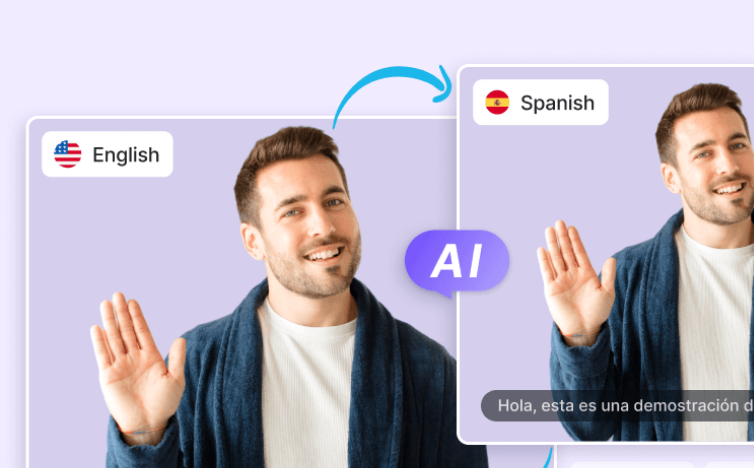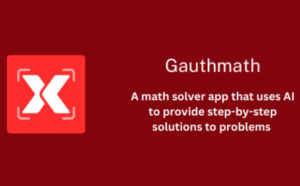In our increasingly globalized world, communicating across languages is more crucial than ever. Whether you’re a content creator aiming to reach a wider audience, a language learner, or a business hoping to expand internationally, AI video translation tools can be your gateway to success. These innovative tools not only convert speech from one language to another but also enhance accessibility and comprehension, opening doors to new markets and audiences. In this blog post, we’ll explore the best AI tools for video translation available, their benefits, and how to choose the right one for your needs.
Table of Contents
The Rise of AI in Video Translation
Artificial intelligence (AI) has come a long way in recent years, finding its place in numerous applications, including video translation. At its core, AI video translation involves the use of sophisticated algorithms to convert spoken or written content from one language to another in video format.This emerging technology facilitates smooth communication, enabling videos to reach a broader and more diverse audience without the need for manual translation.
The advent of AI in this field is driven by the increasing demand for multilingual content. With video consumption at an all-time high, creators and businesses are seeking ways to expand their reach. AI video translation tools offer a solution, providing real-time translations that maintain the video’s original tone and context.
How AI Video Translation Works
AI video translation relies on advanced machine learning algorithms and natural language processing (NLP) techniques. These technologies work in tandem to accurately identify and translate the spoken or written content within a video. The process involves several key steps, starting with speech recognition, where the tool transcribes audio into text. This textual content is then analyzed and translated into the target language, ensuring that the nuances and context are preserved.
One of the standout features of these tools is their ability to handle multiple languages simultaneously. Through continuous learning and training, AI models improve their accuracy over time, making them highly effective in diverse linguistic settings. Many AI video translation tools also offer customizable options, allowing users to fine-tune translations to suit specific needs.
Top AI Tools for Video Translation

Google Translate
Google Translate is a well-known tool that offers a range of translation capabilities, including video translation.

DeepL
DeepL is an AI tool that helps translate languages accurately. It uses advanced technology to make sure the translations sound natural.

HeyGen
HeyGen is an AI tool that makes it easy to create videos with talking avatars.

Microsoft Translator
Microsoft Translator is an AI-powered translation tool that helps translate text, voice, conversations, and even images into different languages.

Mirai Translate
Mirai Translate offers robust AI translation solutions, particularly favored in Japan and other Asian markets for its accuracy with Asian languages.

Rask
Rask provides cutting-edge AI translation geared towards content creators and multimedia professionals wanting high-quality translations.

Smartling
Smartling is renowned for its enterprise-level translation solutions, offering a comprehensive suite of tools for businesses.

Maestra
Maestra specializes in creating multilingual content with its AI-powered platform, perfect for educational and business uses.

Alexa Translations
Alexa Translations offers AI solutions tailored for professional and business use, focusing on accurate and context-rich translations.
Google Translate
Google Translate is a well-known tool that offers a range of translation capabilities, including video translation. It is popular for its accessibility and user-friendly interface, making it a go-to choice for many individuals and organizations.
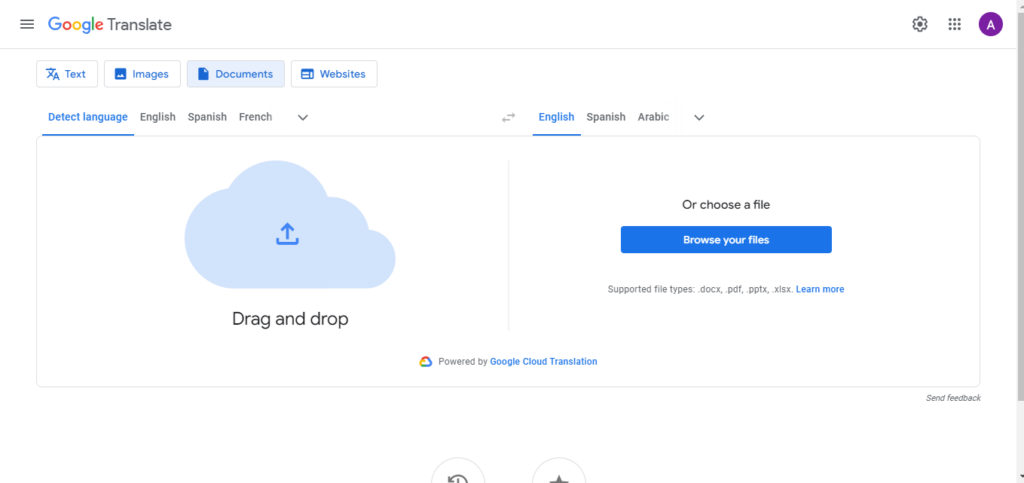
Features
- Real-time translation for videos and audio.
- Integration with YouTube for auto-generated subtitles.
- Customizable translation settings.
- Text-to-speech functionality.
- Contextual phrase detection.
- Offline translation capabilities.
- Cloud-based storage for translations.
- User-contributed translations improve accuracy.
- Free to use for basic features.
- support 130+ languages.
- Neural machine translation that improves with user feedback.
- Supports text, images, and documents (.docx, .pdf, .pptx, .xlsx) and websites.
Pros and Cons
DeepL
DeepL is an AI tool that helps translate languages accurately. It uses advanced technology to make sure the translations sound natural and are easy to understand. Many people like it because it often gives better results than other translation tools. It can translate documents and offers a paid version with extra features like faster translations and more privacy. DeepL is popular with businesses and professionals because of its high quality.
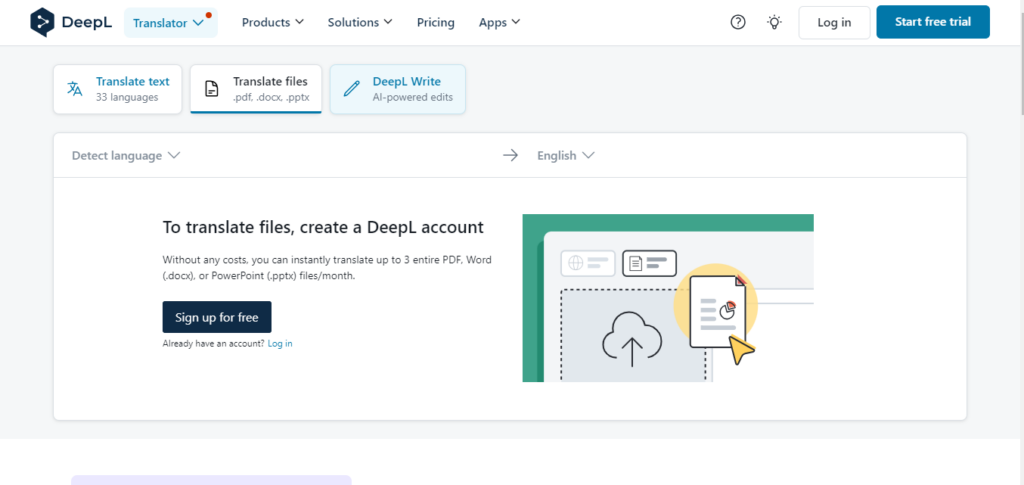
DeepL provides high-quality translations with a focus on context and nuance, making it a preferred choice for businesses requiring precise translations.
Features
- Sophisticated neural networks for translation.
- Supports major European and Asian languages.
- Context-aware translations.
- API integration for custom applications.
- Easy-to-navigate UI.
- High-quality document translation.
- Glossary feature for consistent terminology.
- Adaptable tone and style settings.
- Strong privacy controls.
- Free tier and paid plans available.
- Support Text and documents (.pdf, .docx, .pptx)
- Privacy assured for paid plans.
- Free with limitations; paid plans start at USD 8.74/month.
Pros and Cons
See Also: 11 Best AI Tools For Video Generator
HeyGen
HeyGen is an AI tool that makes it easy to create videos with talking avatars. You can type in text, and the AI turns it into a video where the avatar speaks in different languages. It’s simple to use and helps people quickly create videos for marketing, training, or social media without needing advanced skills.
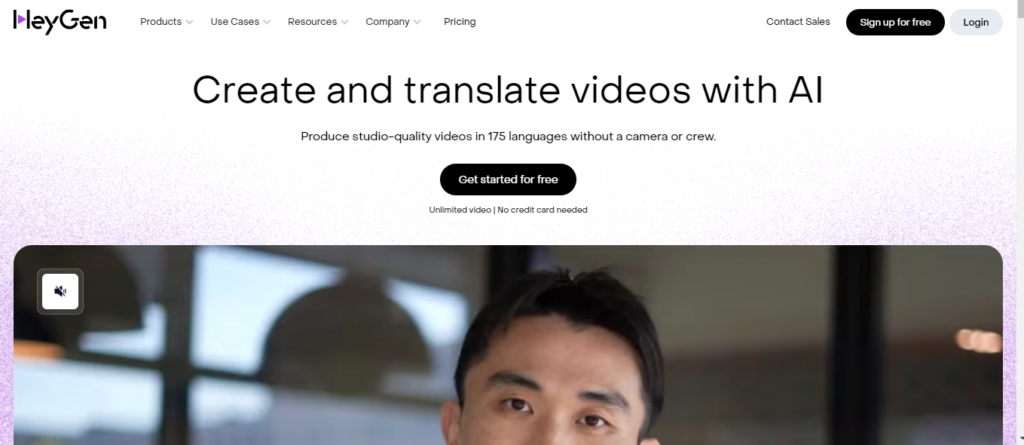
HeyGen specializes in video translation and dubbing, providing content creators with an effective solution for multilingual video content.
Features
- AI-powered dubbing and translation.
- Multiple voice options for dubbing.
- Customizable subtitle styles.
- Batch processing for large projects.
- High-quality voice synthesis.
- Multi-language support.
- Integration with video editing software.
- Cloud-based storage and management.
- Supports various video formats.
- Free trial available.
Pros and Cons
Microsoft Translator
Microsoft Translator is an AI-powered translation tool that helps translate text, voice, conversations, and even images into different languages. The tool is useful for real-time translations, allowing users to communicate across language barriers in both personal and business settings. Microsoft Translator is integrated into services like Microsoft Office, making it convenient for professionals to translate documents and presentations.
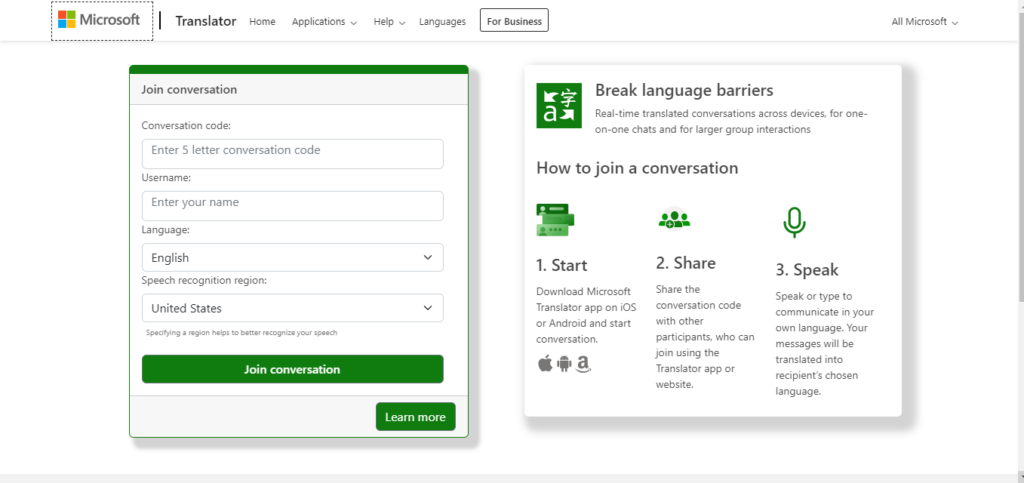
Microsoft Translator offers comprehensive translation services that integrate seamlessly with Microsoft products.
Features
- Supports 60+ languages.
- Real-time video and audio translation.
- Integration with Microsoft Office and Teams.
- Text-to-speech functionality.
- Customizable translation dictionaries.
- Multi-device synchronization.
- Collaborative translation features.
- Strong privacy policies.
- Cloud-based service.
- Free for basic use.
- Neural machine translation.
- Support Text, speech, images, MS files
- No data storage with Translator for Business; free version improves quality using user data.
- Mostly free for personal use; API pricing starts at USD 2K/month
- Good for Companies using Microsoft products; professional and educational settings requiring accurate terminology.
Pros and Cons
See Also: 8 Best AI Tools for Transcription Services
Mirai Translate
Mirai Translate offers robust AI translation solutions, particularly favored in Japan and other Asian markets for its accuracy with Asian languages. It uses neural machine translation technology to deliver accurate, natural-sounding results. The tool is commonly used in business settings for documents, emails, and reports, and is known for handling complex technical and formal language. It’s trusted by companies needing precise translations for international communication.
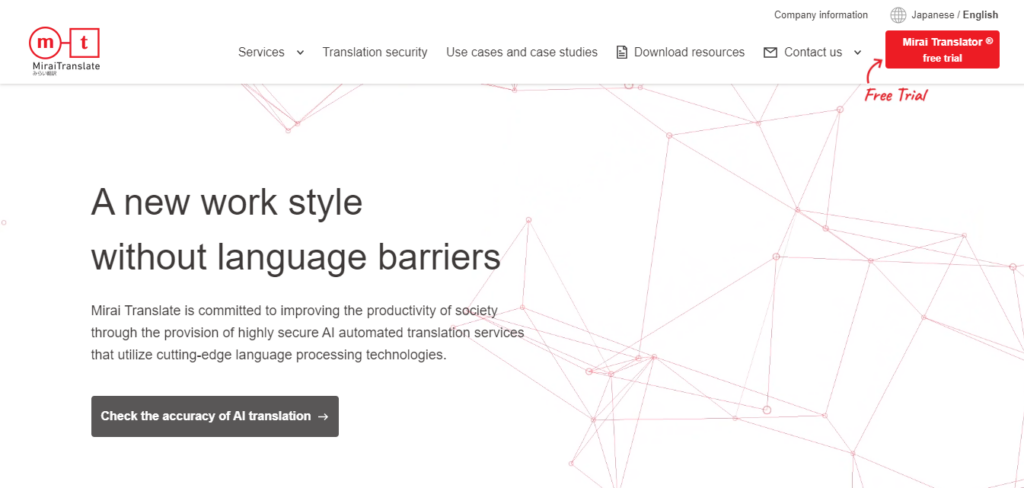
Features
- Specializes in Japanese and Asian languages.
- Context-aware translations.
- Real-time video translation.
- Customizable settings.
- Integration with various platforms.
- High-quality translation memory.
- Secure cloud-based service.
- Collaboration features for teams.
- Stores nouns, technical terms, and phrases in user dictionaries and translation memories for consistent translations.
- Converts speech to text, translates it, and synthesizes it back to speech for multilingual communication.
- Manages user access and shares custom resources like dictionaries and translation memories within teams.
- Offers speech recognition, machine translation, and speech synthesis for 12 languages to support multilingual tools and applications.
Pros and Cons
Rask
Rask provides cutting-edge AI translation geared towards content creators and multimedia professionals wanting high-quality translations. It automatically translates and syncs voiceovers, making it easy to create multilingual content for global audiences. Rask is popular for educational, marketing, and entertainment videos, as it saves time by automating the dubbing process while maintaining the video’s original context and meaning.
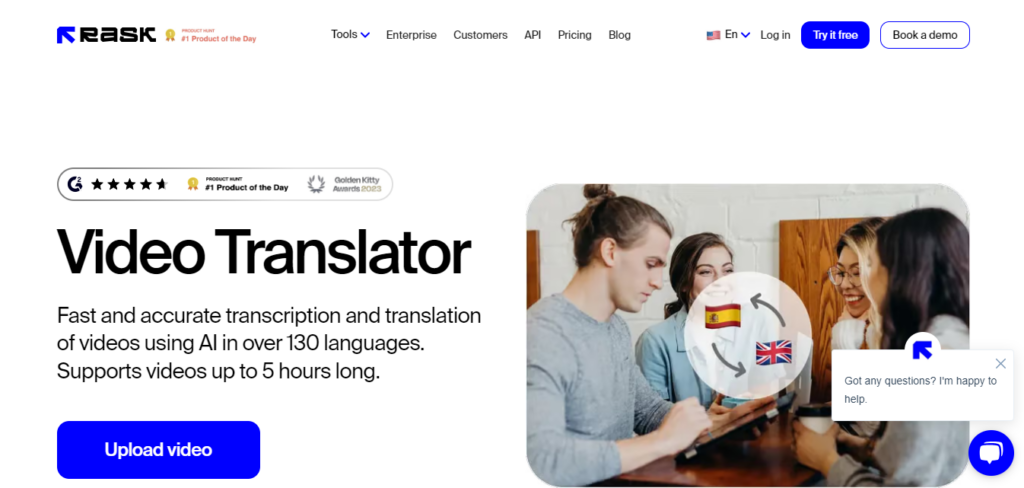
Features
- AI-driven video translation and dubbing.
- Multi-language support.
- Customizable voice and subtitles.
- Batch processing feature.
- Integration with popular editing tools.
- High-quality audio synthesis.
- Detailed analytics.
- Secure cloud storage.
- Multi-platform compatibility.
- Optimizes video content for search engines.
- Creates captions automatically for videos.
- Generates SRT files for subtitling.
- Provides accurate translations for text and audio.
- Mimics native speaker styles in voiceovers.
- Automates video localization at scale.
- Allows repurposing videos into YouTube shorts.
- Imitates your voice in 30 languages.
- Matches audio pacing for better viewing experience.
Pros and Cons
See Also: 11 Best AI Tools For Music Generators
Smartling
Smartling is renowned for its enterprise-level translation solutions, offering a comprehensive suite of tools for businesses. Smartling is an AI-driven translation and localization platform designed to help businesses translate content across various channels like websites, apps, and documents. It streamlines the translation process by using machine translation, human translators, and workflow automation. Smartling allows companies to manage their multilingual content efficiently, ensuring consistency and quality. It’s widely used for global marketing, software localization, and customer support, enabling businesses to reach international audiences more effectively.
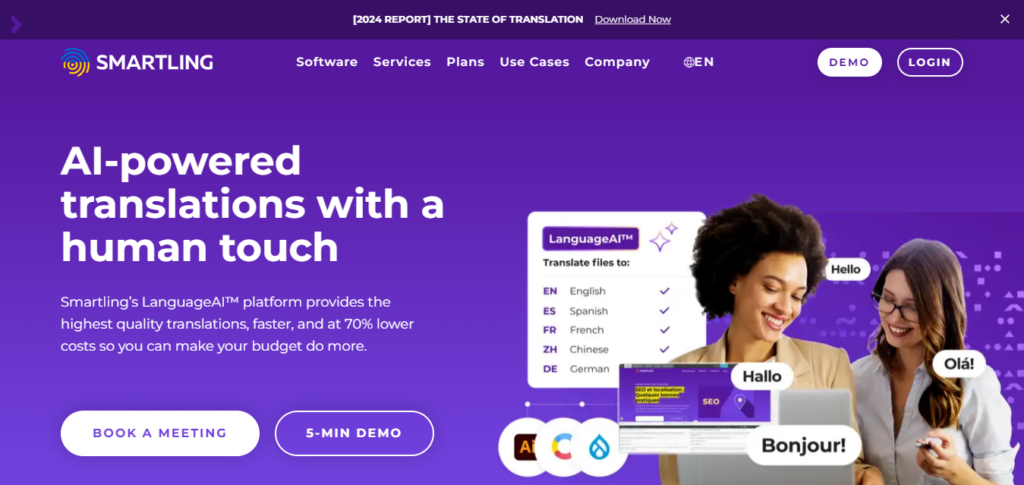
Features
- End-to-end translation management.
- AI-driven text and video translation.
- Real-time collaboration tools.
- Multiple language support.
- Customizable workflow settings.
- Analytics and reporting features.
- Secure cloud infrastructure.
- Boosts organic search visibility in multiple languages and markets through local keyword research, translation, content audits, and SEO/SEM copywriting.
- Assesses translation quality using a customizable error cataloging framework, with error analysis informing necessary edits.
- Translates various video content types, providing transcription, subtitling/captioning, voiceover/narration, and dubbing services.
Pros and Cons
Maestra
Maestra specializes in creating multilingual content with its AI-powered platform, perfect for educational and business uses. Maestra AI is a tool that automatically transcribes, captions, and translates audio and video content. It uses artificial intelligence to turn spoken words into text, making it easy for users to create subtitles and captions for videos in multiple languages. Maestra is popular with content creators, educators, and businesses looking to make their videos more accessible and reach a global audience by adding subtitles or translating their content efficiently.
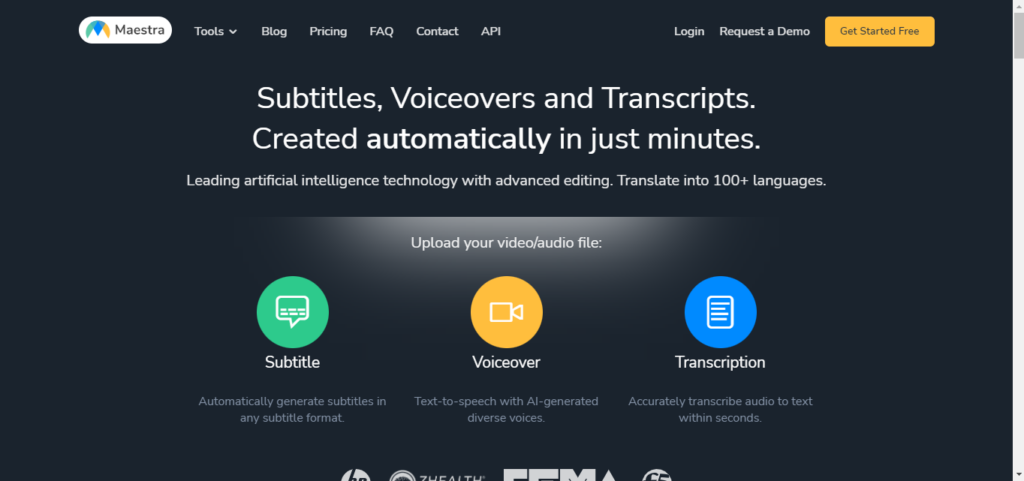
Features
- AI-powered transcription and translation.
- Supports multiple languages.
- Customizable transcription settings.
- Real-time collaboration.
- Integration with educational tools.
- Excellent customer support.
- Automatically generates video subtitles.
- Effective for transcribing spoken words into text.
Pros and Cons
Alexa Translations
Alexa Translations offers AI solutions tailored for professional and business use, focusing on accurate and context-rich translations. Alexa Translations is an AI-powered translation service that offers high-quality translations for industries like legal, financial, and technical. It combines machine translation with human expertise to ensure accuracy and context. The platform provides solutions for document translation, website localization, and multilingual content management, helping businesses communicate effectively across languages.
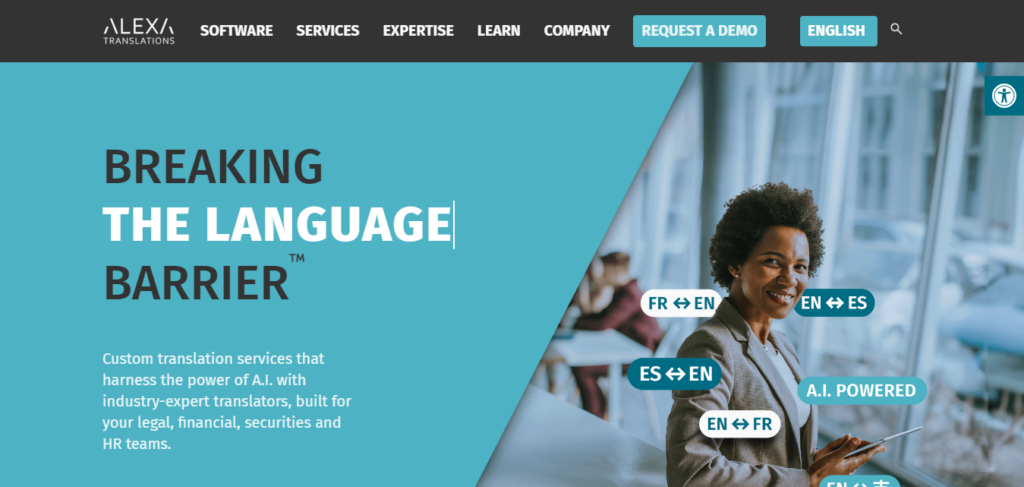
Features
- Custom solutions for specific industries.
- AI-driven rephrasing and translation.
- High accuracy for legal and financial documents.
- Integration with various business tools.
- Adaptive language model.
- Cloud-based platform.
- Detailed analytics and insights.
- Industry-specific glossaries.
- Advanced security features.
Pros and Cons
See Also: 10 Best AI Tools For Voice Changer
Benefits of AI Video Translation Tools
AI video translation tools offer a host of benefits that can elevate your content and communication strategies. First, they provide seamless access to diverse global audiences, breaking down language barriers and making your content accessible to non-native speakers. This enhanced inclusivity can significantly increase your reach and engagement.
Furthermore, these tools can save you time and resources by automating the translation process. Unlike traditional methods that require hiring human translators for each language, AI tools can quickly and efficiently translate content into multiple languages. This efficiency allows content creators, businesses, and educators to focus on generating high-quality materials rather than getting bogged down with translation logistics.
Finally, AI translation tools are continuously improving, providing more accurate and context-aware translations. This means the small details and differences in language are preserved, making sure your message stays clear and fits the culture. With these benefits, it’s easy to see why these tools are becoming essential in many industries.
How to Select the Best AI Video Translation Tool
Choosing the right AI video translation tool involves considering several factors. Firstly, evaluate the scope of languages offered. Ensure the tool supports the languages you need for your target markets. Also, consider the accuracy and quality of translations. Look for tools that have a reputation for providing contextually accurate translations with minimal errors.
Another crucial factor is ease of use. The interface should be intuitive, allowing users without technical expertise to operate it efficiently. Additionally, assess the tool’s integration capabilities. Whether you’re using it for YouTube videos, webinars, or corporate communications, it should seamlessly integrate with your existing platforms and software.
Lastly, consider the cost and any additional features offered. While some tools may come at a premium, they may provide extra functionalities like subtitles, voiceovers, or analytics. Weigh these factors against your budget and specific needs to find the perfect fit for your purposes.
Conclusion
AI video translation tools are proving essential for content creators, language learners, and businesses striving to reach a global audience. From Google Translate’s broad accessibility to Smartling’s enterprise solutions, there’s a tool for every need. By leveraging these technologies, you can communicate effectively across languages, enhance inclusivity, and streamline operations.
FAQs
What is an AI video translation tool?
These tools use artificial intelligence to translate spoken language in videos into different languages, often including subtitles or voiceovers.
Are AI translations as accurate as human translations?
While AI translations have improved significantly, they may not yet match the nuanced understanding of human translators, especially for complex text or cultural references.
Can I use AI video translation tools for live events?
Yes, some tools offer real-time translation features suitable for live events, although the accuracy may vary depending on the tool and event complexity.

